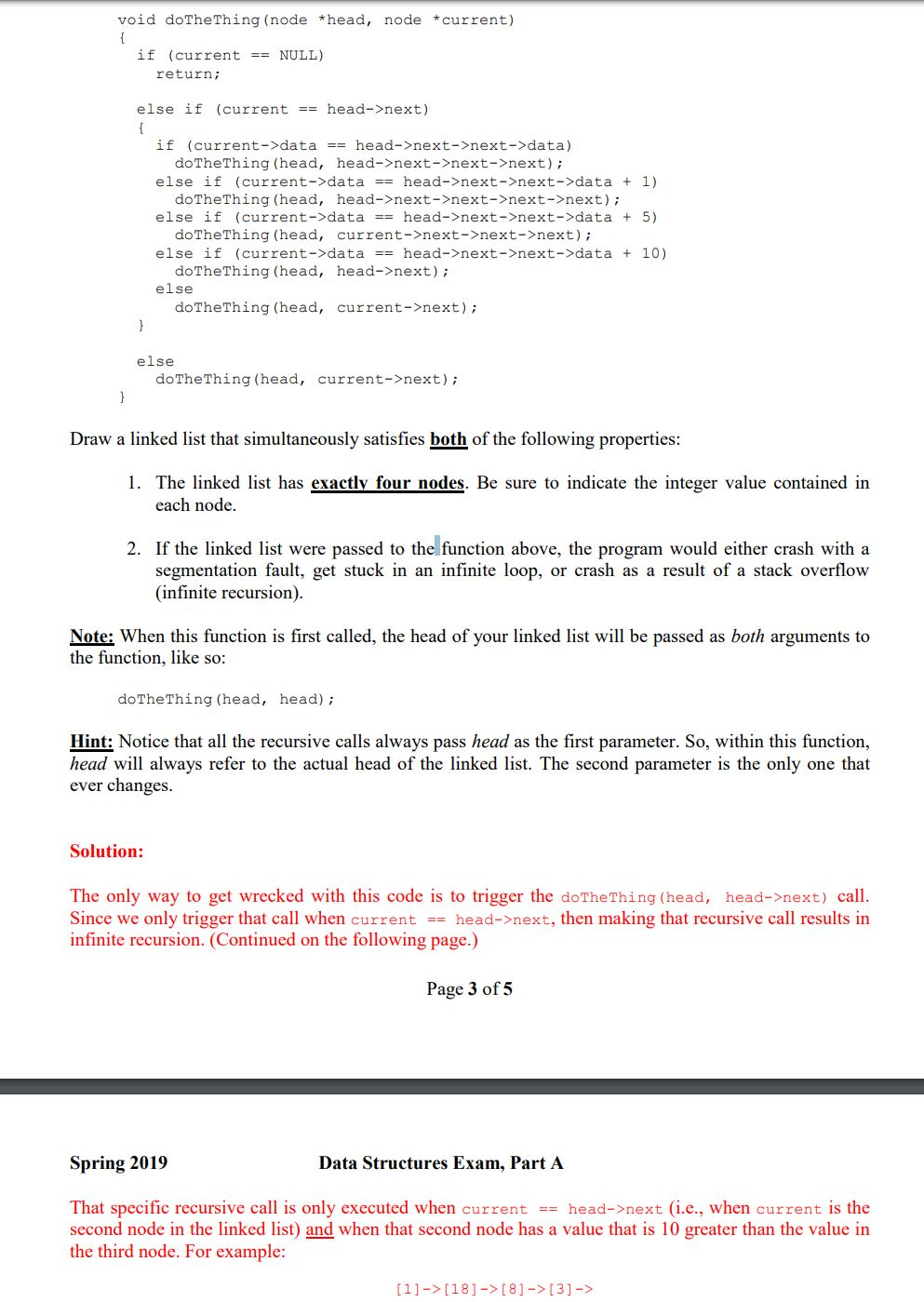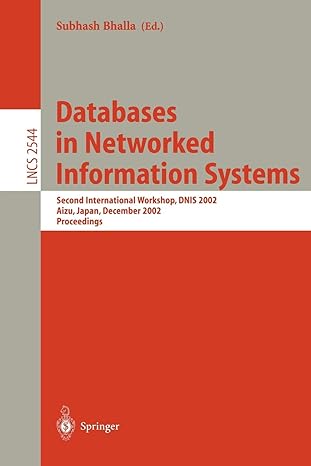Answered step by step
Verified Expert Solution
Question
1 Approved Answer
Explain answer. Clearly please. Computer Science. C Language void doTheThing (node *head, node *current) if (current == NULL) return; else if (current == head->next) if

Explain answer. Clearly please. Computer Science. C Language
void doTheThing (node *head, node *current) if (current == NULL) return; else if (current == head->next) if (current->data == head->next->next->data) doTheThing (head, head->next->next->next); else if (current->data == head->next->next->data + 1) doTheThing (head, head->next->next->next->next); else if (current->data == head->next->next->data + 5) doTheThing (head, current->next->next->next); else if (current->data == head->next->next->data + 10) doTheThing (head, head->next); else doTheThing (head, current->next); else doTheThing (head, current->next); Draw a linked list that simultaneously satisfies both of the following properties: 1. The linked list has exactly four nodes. Be sure to indicate the integer value contained in each node. 2. If the linked list were passed to the function above, the program would either crash with a segmentation fault, get stuck in an infinite loop, or crash as a result of a stack overflow (infinite recursion). Note: When this function is first called, the head of your linked list will be passed as both arguments to the function, like so: doTheThing (head, head); Hint: Notice that all the recursive calls always pass head as the first parameter. So, within this function, head will always refer to the actual head of the linked list. The second parameter is the only one that ever changes. Solution: The only way to get wrecked with this code is to trigger the doTheThing (head, head->next) call. Since we only trigger that call when current == head->next, then making that recursive call results in infinite recursion. (Continued on the following page.) Page 3 of 5 Spring 2019 Data Structures Exam, Part A That specific recursive call is only executed when current == head->next (i.e., when current is the second node in the linked list) and when that second node has a value that is 10 greater than the value in the third node. For example: [1]-> [18] ->[8] -> [3] ->Step by Step Solution
There are 3 Steps involved in it
Step: 1

Get Instant Access to Expert-Tailored Solutions
See step-by-step solutions with expert insights and AI powered tools for academic success
Step: 2

Step: 3

Ace Your Homework with AI
Get the answers you need in no time with our AI-driven, step-by-step assistance
Get Started


